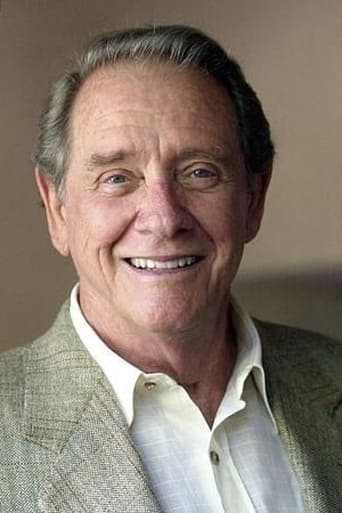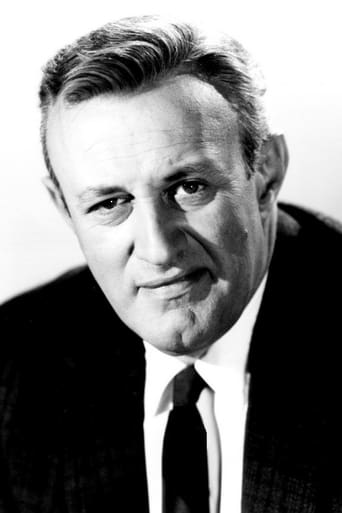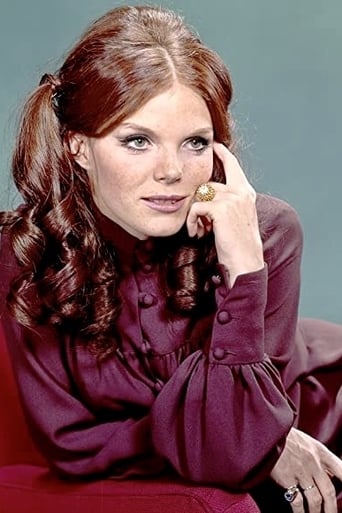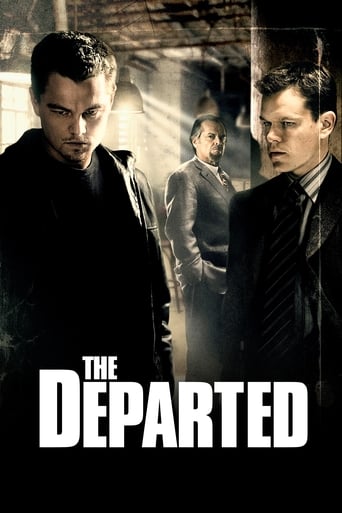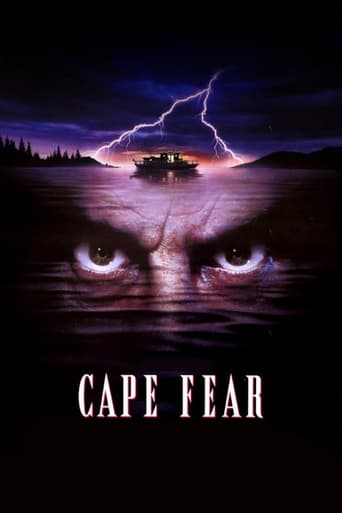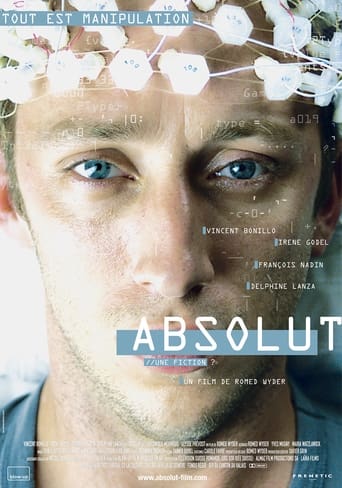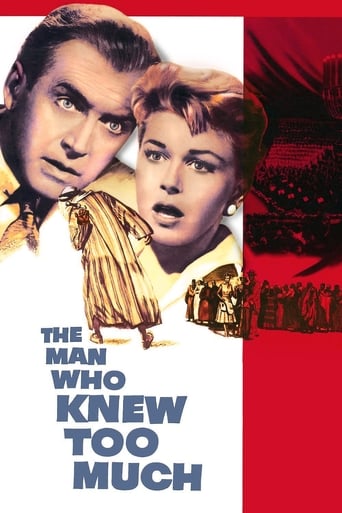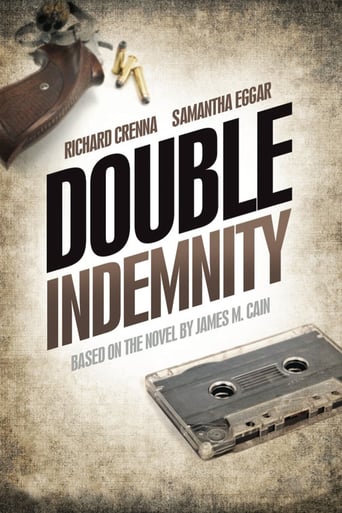

Double Indemnity (1973)
A scheming wife lures an insurance investigator into helping murder her husband and then declare it an accident. The investigator's boss, not knowing his man is involved in it, suspects murder and sets out to prove it.
Watch Trailer
Cast
Similar titles
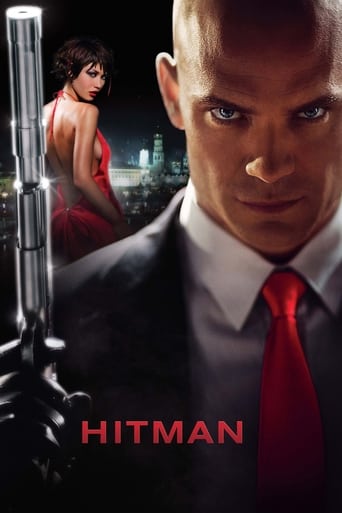


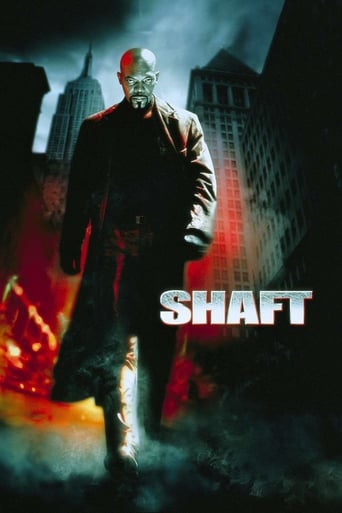
Reviews
Instant Favorite.
A great movie, one of the best of this year. There was a bit of confusion at one point in the plot, but nothing serious.
The film never slows down or bores, plunging from one harrowing sequence to the next.
This movie tries so hard to be funny, yet it falls flat every time. Just another example of recycled ideas repackaged with women in an attempt to appeal to a certain audience.
This remake of the film noir classic about a seductress and an insurance man having an affair of horror, planning the murder of her husband, gives us the same question as just about any remake.Why the remake? Many remakes are simply film adaptations of classic novels, such as TREASURE ISLAND.Here, though, we have what is essentially a "homage" to E.G. Robinson and the others, who made the original classic.The crux of the story is the Columbo style E.G. character. He is always the important one. And Lee J Cobb does a fine job. In fact, he is the the entire show in this one. I don't mean to disparage Richard and Samantha, but they were very bland.And that was probably the point, to keep them bland.It still makes for the question "Why the remake?" Lee J Cobb tries to make this his own role. And that's okay. You really don't want to try to mimic a classic. He does okay, but there are times when E.G. just did it perfect. For example, when he says "Closer than that", E.G. was perfect. Cobb, in the effort to make it his own, knows it is taking something away when he adds "much closer", but he doesn't want to be compared too much to E.G.'s perfect portrayal.Which is why you don't really want to remake a classic film noir.
This 1973 TV remake of the Billy Wilder classic is inferior to the original. Surprise!First, the good things. Lee J. Cobb makes a terrific Barton Keyes. He's not as good as Edward G. Robinson, of course, but he's the only reason to watch this. This remake's only improvement over the original is that it cuts down the role of Lola Dietrichson, the step-daughter of the femme fatale, Phyllis Dietrichson.And that's it for the good things.The bad things are many. The director records everything in an indifferent manner: if you watched the film with the sound muted you'd hardly get the impression that anything especially interesting was happening. Because of modern bad taste, the film must be in color instead of black and white. Because of 1970s bad taste, all the sets are distractingly ugly. Walter Neff's expensive apartment, in particular, is hideous.The modern setting hurts in a lot of small ways. Train trips were a bit more unusual in the 70s than in the 40s, so Mr. Dietrichson's decision to take a train seems more of a contrivance. Men stopped wearing hats, which prevents Walter from covering up his brown hair while posing as the white-haired Mr. Dietrichson. Women in mourning stopped wearing veils, which robs Samantha Eggar of a prop Barbara Stanwyck made splendid use of in a key scene. (Oddly, Lola still has the line where she reveals that her stepmother was trying on a black hat and veil before she had need of them.)Stephen Bochco keeps much of the Billy Wilder-Raymond Chandler script the same. But he makes a lot of tiny, inexplicable changes to the dialogue which leave the script slightly flabby where once it was lean and muscular. Outrageously, the famous motorcycle-cop banter is gone, but look closely and you'll see what looks like a post-production cut where those lines should have been. Bochco may not be to blame.Richard Crenna is passable as Walter Neff. What might have made this version tolerable is a really splendid Phyllis Dietrichson. Instead we get Samantha Eggar, who comes off like a standard-issue villainess from "Barnaby Jones." But who can blame Eggar? With a director who barely seems interested in what's happening in front of the camera, how could Barbara Stanwyck herself have come off well?
The second of the 2 discs in the splendid new DOUBLE INDEMNITY (DI) DVD set contains Universal's updated 1973 TV-movie version (let's call it DI v2). The original 1944 film noir rocks, but the remake sinks like a stone. Still, both versions are worth a look for anyone who wants to learn how make a spellbinding film noir, because you learn important lessons when you watch them back-to-back: 1. *Just because your leading lady is pretty, it doesn't automatically mean she's irresistible enough to lead men to their doom.* As the 1973 edition of femme fatale Phyllis Dietrichson, Samantha Eggar is very pretty. I'll admit I liked Eggar's long, lovely red hair (and the black turban she wears in the murder scene -- very Lana Turner!) better than Barbara Stanwyck's trashy blonde wig (as a studio boss reportedly griped during the filming of the original DI, "I hire Barbara Stanwyck, and I get George Washington!"). However, Stanwyck exudes such sensual magnetism and charisma, even that wig doesn't keep Fred MacMurray from becoming putty in her hands. While Eggar has been appealing in other roles, in DI v2, she's undeniably pleasant to look at, but alas, she has all the carnal allure of an impatient English nanny. Watching Eggar try to be a sinful siren reminded me of the scenes in 1968's STAR! in which Julie Andrews tries to use her prim-and-proper, nigh-operatic tones to belt out torch songs and splashy Broadway production numbers: it's not her style, and her discomfort shows. As a rule, discomfort isn't sexy.2. *It don't mean a thing if the leads ain't got that zing.* That brings me to Eggar's delivery; she always sounds vaguely bored and/or annoyed with Richard Crenna's Walter Neff. In the original, even when Stanwyck was scolding or angry, somehow she seemed all the more fascinating. Her sultry voice, with just a trace of her native Brooklyn accent (but from her lips, it sounded good! :-), was just as seductive as the rest of her. DI v2 might be remembered as more than just a cinematic footnote if Eggar and Crenna had even a fraction of the chemistry that sizzles between Stanwyck and MacMurray, the latter brilliant as a cynical smart-aleck whose street-wiseness goes out the window under this devious dame's influence. It just goes to show that in a story like this, the best acting in the world won't help if the leads don't have chemistry and charisma.3. *A little moody atmosphere goes a long way in crime movies.* Despite the attractive locations, especially the Spanish-style accents in the opulent Dietrichson home (though I'd forgotten how prevalent the colors beige, harvest gold, and avocado green were back in the 1970s, not to mention blocky impressionistic artwork! :-), DI v2's L.A. seems like a duller, less exciting place than DI's original Los Angeles. The remake's flat '70s TV lighting and uninspired camera angles can't hold a candle to the original's menacing lighting effects and the great John Seitz's photography, which looks almost like painting with shadows. Ironically, the 1973 update now feels more dated than the 1944 original -- and if you listen carefully early on, you'll realize the first film was actually set in the late 1930s! DI v2 does try for a bit of startling imagery here and there, though it's made of cruder stuff than the sleek imagery of the original. For instance, a scene in which wounded, bleeding Walter tapes a confession for Keyes opens on a close-up of Walter's blood-stained cigarettes. Billy Goldenberg's piano-and-strings music is somber enough, though it certainly won't make you forget Miklos Rozsa's brassy, powerful score for the original.Apart from Eggar's forgettable performance, the good cast helps make DI v2 fairly watchable, though far from a must-see except for completists like me. :-) As Walter Neff, Richard Crenna makes an amiable dupe who finds himself in over his head, though he doesn't have MacMurray's balance of insouciance and intensity (maybe Crenna should've worn a fedora :-). Interesting note for vintage TV fans: when Crenna's voice is cracking from the pain of his gunshot wounds during his confession-by-dictaphone, he often sounds distractingly like he did as a young man on the 1950s TV show OUR MISS BROOKS. John Fiedler and his "Piglet" voice suit Jackson-from-Medford delightfully. Lee J. Cobb's portrayal of Barton Keyes is good, but quite different from Edward G. Robinson. Unlike the energy and fighting spirit of Robinson's performance, Cobb's Keyes seems older and wearier. When he talks about how the "little man inside" upsets his stomach when he senses a phony claim, you really do get the feeling he's about to throw up any minute! Don't get me wrong, though -- Cobb's approach is quite effective in the context of the remake, especially since the remake as a whole has a lot less snap, crackle, and pop than the original. No wonder Cobb/Keyes has indigestion; maybe he needs a nice soothing bowl of Rice Krispies... :-) With a script by Steven Bochco and direction by TV crime-show veteran Jack Smight (who also did a nice job with theatrical suspensers HARPER, KALEIDOSCOPE, and NO WAY TO TREAT A LADY), you'd think DI v2 would still be worth watching, but despite the occasional gripping moment, this '70s show is still just polyester while the original is pure silk.
This 1973 remake of the classic 1944 Billy Wilder film, "Double Indemnity," is a textbook example of how to destroy a great script. This grade-B TV fodder also illustrates the folly of remakes in general. While Hollywood has gone after greedy executives that colorize black-and-white films and sought disclaimers on wide-screen movies that are shown in pan-and-scan versions, the industry has ignored the hacks that insist on taking a classic film and diminishing it with a shoddy remake.The first step in producing a bowdlerized version of a classic is to edit the script. The Billy-Wilder-Raymond-Chandler work was cut by a half hour to fit the finished film into a specified time-slot with room for commercials. Then update the production with bland, color photography, smart, upscale sets, and TV-familiar actors. Thus, the brand-new "Double Indemnity" eliminates the atmospheric black-and-white film-noir cinematography that enhanced the mood and characterizations of the original. Gone are the dusty, shadowy, claustrophobic sets that explained the protagonists' desires to escape their situations at whatever cost. Gone are the close bond between Keyes and Neff and the erotic attraction between Neff and Phyllis.The look of Jack Smight's take on "Double Indemnity" is more "Dynasty" than film noir. Phyllis Dietrickson has a designer home to die for, and Neff's comfy pad would be hard to afford on an insurance salesman's salary, not to mention the sporty Mercedes convertible that he drives. Neither character has any apparent motive to murder for a paltry $200,000. If not money, then perhaps murder for love or lust? Not in this version. Richard Crenna shows little interest in Samantha Eggar, and their kisses are about as lusty as those between a brother and a sister. Crenna fails to capture the cynicism of Neff, and his attempts at double-entendre and sexual suggestiveness fall horribly flat. Eggar is little better and lacks sensuality and the depth to suggest the inner workings of a supposedly devious and manipulative mind. Only Lee J. Cobb manages a creditable performance as Keyes. Director Jack Smight and his three principals have all done much better work.There was no conceivable reason to produce this wretched remake except to fill time in a broadcast schedule. There was no conceivable reason to resurrect this dud on DVD and package it with the original film except to fill out a double-disc package. The only lesson that can be learned from this misfire is that even a great script and great dialog can be ruined with poor casting, lackluster direction, and TV grade production values. The 1973 "Double Indemnity" should be titled "10% Indemnity," because viewing it only underscores the 100% perfection of the original movie.
